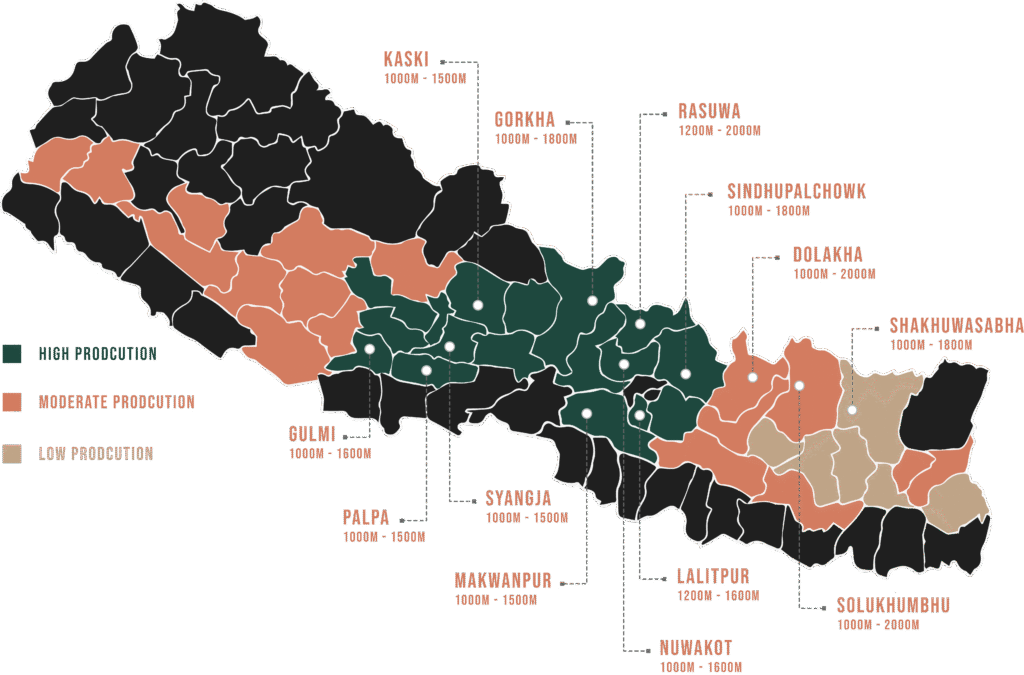The
Pour Over
clarity in a cup—precision, patience, and pure flavor in every cup.
what is a Pour over Coffee?
Pour-over is a manual brewing method that lets water pass slowly through freshly ground coffee using nothing but gravity, precision, and time. Unlike espresso machines or drip brewers, every cup is handcrafted — one pour, one cup, one experience.
In a pour-over, the barista controls every variable: Grind size — determines extraction and strength. Water temperature — usually between 92°C–96°C, balancing sweetness and acidity. Pour rate and pattern — ensures even saturation and a smooth, balanced flavor.
The result is a cleaner, brighter, and more aromatic cup of coffee where you can taste every subtle note — from fruit and floral to nut and spice — depending on the bean and process.
At our café, pour-over is more than a brewing technique; it’s a ritual of patience and precision. Each brew is measured, timed, and poured to highlight the character of the bean — creating a sensory moment that’s calm, deliberate, and deeply personal.
View – regions where coffee in produced and sourced from in Nepal.
What is coffee Processing?
Washed
In the washed method, freshly picked coffee cherries are pulped to remove their outer skin, then soaked in water for several hours or even days to break down the sticky mucilage surrounding the beans. After fermentation, the beans are thoroughly rinsed in clean water and laid out to dry under the sun. This meticulous washing removes nearly all traces of fruit, leaving behind only the pure character of the bean itself.
Effect: Highlights the bean’s true origin and acidity. Expect citrus, floral, or tea-like notes.
Taste: Clean, bright, and crisp.
Nautral
In this traditional method, the entire coffee cherry — skin, pulp, and all — is dried intact under the sun. The fruit is turned regularly to prevent mold and ensure even drying. Once fully dehydrated, the dry husk is removed, revealing the bean inside. This slower, fruit-intense process allows the sugars from the pulp to seep into the seed, creating deep sweetness and a dense body.
Effect: The drying fruit infuses natural sugars, creating wine-like or berry-forward flavors.
Taste: Sweet, fruity, full-bodied.
Honey
The honey process sits between washed and natural methods. The outer skin of the cherry is removed, but much of the sticky mucilage — known as “honey” — is intentionally left on during drying. Depending on how much mucilage remains, you’ll find variations like yellow, red, or black honey, each producing slightly different results. The beans are dried slowly, absorbing sugars and enzymes from the remaining fruit layer.
Effect: Blends the clarity of washed with the sweetness of natural; expect caramel, nut, or chocolate tones.
Taste: Balanced, smooth, and sweet.
Anaerobic Fermentation
In anaerobic processing, coffee cherries or pulped beans are placed into sealed, oxygen-free tanks where fermentation occurs under controlled pressure and temperature. The lack of oxygen allows specific yeast and bacterial strains to dominate, producing unique flavor compounds. This modern technique demands precision, as even small shifts in fermentation time or pH can transform the outcome.
Effect: Produces experimental profiles—tropical fruit, spice, or floral tones, with intense aroma.
Taste: Complex, bold, and aromatic.
Wet-Hulled
Commonly used in Indonesia, this method involves removing the parchment layer from the coffee bean while it’s still moist. Farmers hull the beans before they’re fully dry, then finish drying them under the tropical climate. This partial drying gives the coffee its distinctive blue-green color and earthy character. The process was born out of necessity due to high humidity, but it has become an identity of its own.
Effect: Yields full body and rich herbal, tobacco-like notes.
Taste: Earthy, deep, low-acid.
Carbonic Maceration
Borrowed from winemaking, carbonic maceration involves fermenting whole coffee cherries in sealed stainless-steel tanks filled with carbon dioxide. The CO₂ environment triggers a slow, internal fermentation that preserves sugars and amplifies aromatic compounds. This technique is highly experimental and requires close monitoring to prevent over-fermentation.
Effect: Brings out unusual flavors — tropical fruit, spiced wine, or bubblegum-like sweetness.
Taste: Vivid, exotic, highly aromatic.
Coffee Production in nepal


